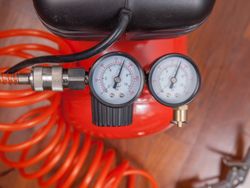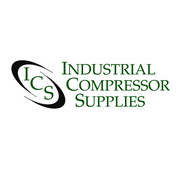How to Determine the Size of Your Next Air Compressor Tank

From inflating tires to refinishing wood furniture, air compressors are one of the most versatile tools on the market. That's why it's so important to zero in on the exact specifications of your air compressor and its tank. If you're wondering how to decide what size is best for your needs, consider the following guide.
Why Is Tank Size Important?
While the motor of your air-powered tool is operating, it is using up all the compressed air reserved in the tank. At a certain point, all the compressed air will have been utilized, and the motor will need to shut off so that more can be produced. Therefore, the size of your air compressor tank will dictate the duration of your work sessions.
Some power tools need an uninterrupted supply of compressed air—such as sandblasters—while others only need short bursts of energy, like brad nailers. Ideally, you’ll want to limit the number of times the motor needs to switch on and off to refill the compressed air tank.
Not only is this optimal for the compressor’s life span, but it will also enhance your productivity. Therefore, if your jobs require long-term, continuous air power—such as blowing up an inflatable pool or sanding an entire wardrobe—a 20-gallon tank will make the task much easier than a two-gallon tank.
How Do You Determine What Size You Need?
 To choose the right tank, you’ll need to consider how much airflow your compressor provides or needs to provide. This power is measured in Standard Cubic Feet per Minute or CFM. Essentially, you’ll need to match the CFM rating of the air-powered tool you use most to the CFM rating of the compressor tank. This figure will fluctuate depending on how pressurized the air is, which is measured in PSI.
To choose the right tank, you’ll need to consider how much airflow your compressor provides or needs to provide. This power is measured in Standard Cubic Feet per Minute or CFM. Essentially, you’ll need to match the CFM rating of the air-powered tool you use most to the CFM rating of the compressor tank. This figure will fluctuate depending on how pressurized the air is, which is measured in PSI.
First, check the manuals of all your air-powered tools to see what CFM rating their manufacturer’s recommend. You’ll need to find an air compressor that can keep up with your most power-hungry air tools. To do this, calculate the CFM times 1.5. The number you end up with will point to exactly what size air compressor tank you need. For example, the average CFM for a die grinder is five at a PSI of 70–90. If 5 x 1.5 = 7.5, you’ll need an air compressor with at least 7.5 CFM.
If you have more questions about choosing the right air compressor and tank, reach out to Industrial Compressor Supplies of Maryland Heights, MO. They can point you to the right air compressor for your needs and provide parts and accessories to enhance your project. They also offer 24/7 emergency repair services in the St. Louis area. To learn more about their offerings, visit the website, or call (877) 426-3131 today.
About the Business
Have a question? Ask the experts!
Send your question

